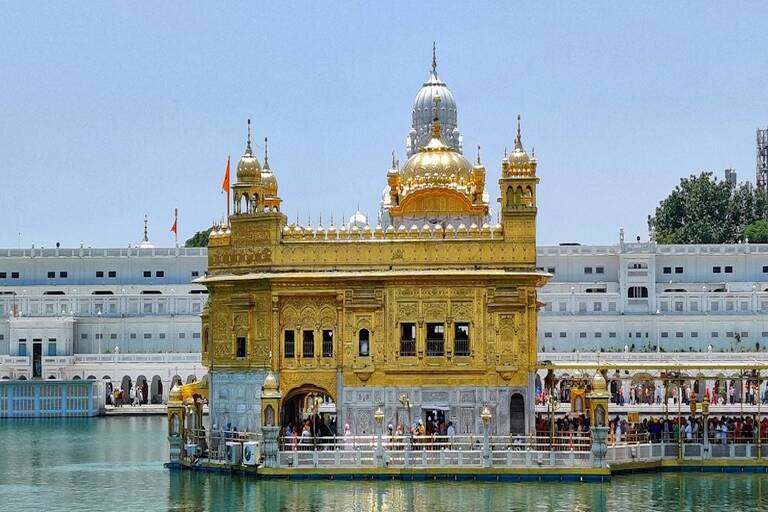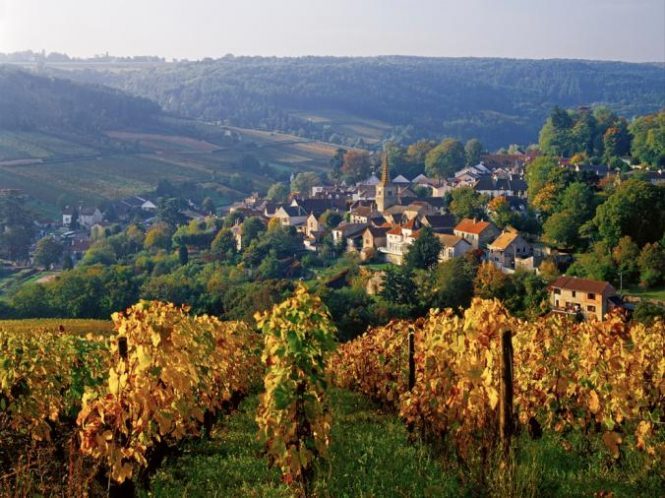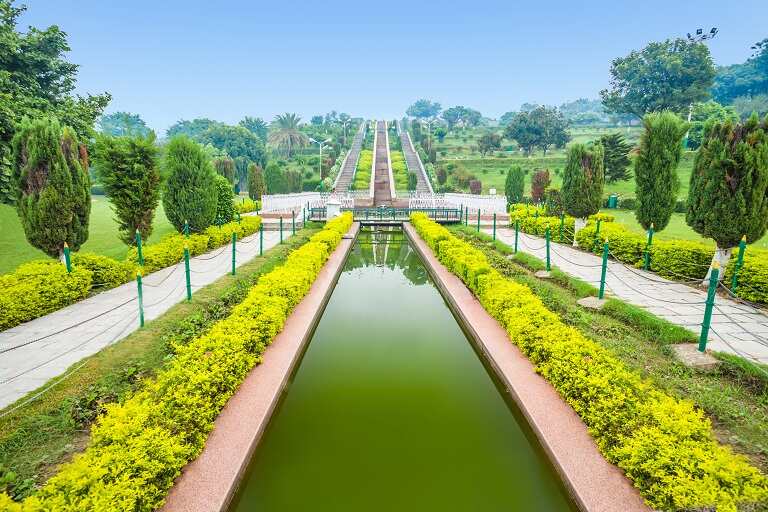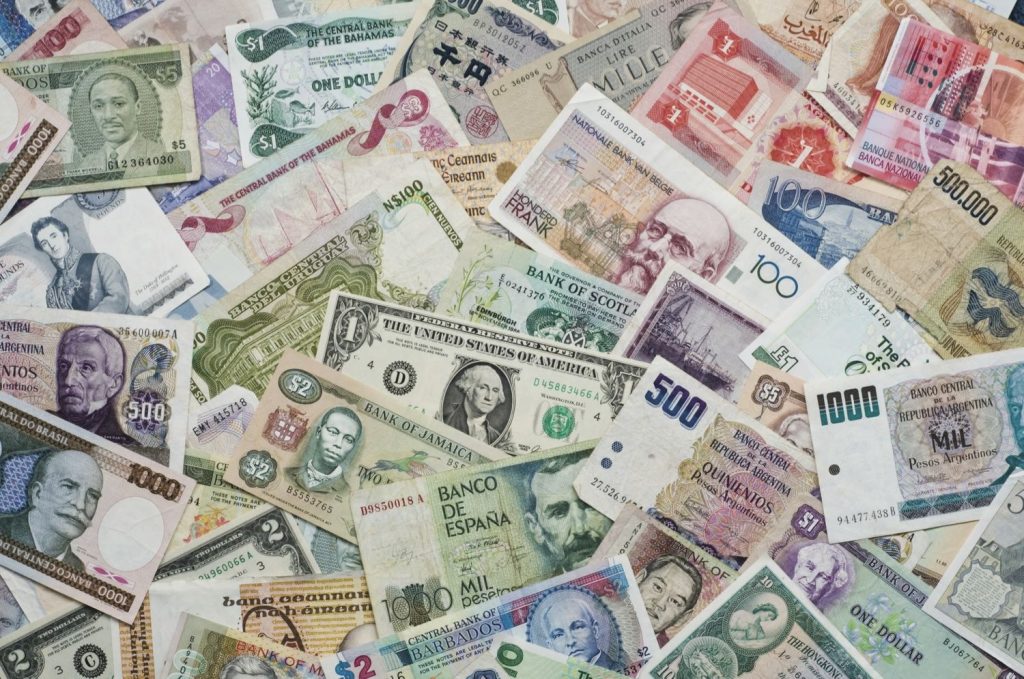
Know All About Amritsar’s Golden Temple and Fields of Gold
Table of contents
Amritsar‘s Golden Temple in Punjab is a celebrated monument renowned for both its spiritual significance and architectural beauty. This spiritual sanctuary, known as Darbar Sahib or Harmandir Sahib, attracts devotees and tourists with its golden grace. It offers the perfect blend of serenity, devotion, and architectural beauty. As you approach this sacred haven, the shimmering domes and tranquil waters paint a picture of tranquillity against the stunning backdrop.
Today, the Golden Temple or Suvarna Mandir in Amritsar is a top tourist destination, drawing people with its spiritual aura, and architectural grandeur. Festivals like Vaisakhi, Guru Nanak’s birthday, Guru Teg Bahadur’s martyrdom day, and Guru Ram Das’s birthday are celebrated passionately in this Punjab India Golden Temple. During Diwali, the Golden Temple illuminates with earthen lamps or diyas, creating a spectacle of light.
If you plan to visit the Golden Temple in Punjab, here’s all the information you need.
History of The Golden Temple

Establishing the Golden Temple is a significant chapter in Sikhism history. The foundation of the Golden Temple in Punjab was set up in 1581, and by 1588, the construction was completed. In 1604, Guru Arjan, the fifth Guru of the Sikhs, placed a copy of the Adi Granth, the main scripture of the Sikhs, within the gurudwara. During that era, the site bore the name Ath Sath Tirath. Unfortunately, the passage of time witnessed the shrine being repeatedly destroyed by the rulers of the Mughal Empire and the advancing Muslim armies from Afghanistan. However, the resilient Sikh community rebuilt it each time.
The current structure of the gurudwara traces its origins back to the 18th century. Construction commenced in 1764 under the guidance of Sultan-e-Quam Sardar Jassa Singh and concluded in 1776. Approximately fifty years later, in 1830, Maharaja Ranjit Singh undertook a renovation, adorning the gurudwara with gold foil. This transformative touch earned it the revered title of the Golden Temple.
In 1984, the temple became a focal point of conflict involving armed Sikh militants within its premises and the Indian Government. Indira Gandhi ordered the Indian Army to execute Operation Blue Star. This military intervention resulted in over 1000 casualties, which included civilians, militants, and soldiers. This operation also caused significant damage to the shrine as well. However, once again, the Sikh community got together and restored the temple.
Golden Temple: Architecture

Golden Temple Architecture
Situated amidst the serene water body known as Amritsar or Amrit Sarovar, the Golden Temple gurdwara in Amritsar boasts a fusion of architectural influences. Reflecting the Hindu Rajput design and Indo-Islamic Mughal style, this two-storied marvel showcases a captivating blend of cultural aesthetics. The lower level, crafted from marble, forms the base, while the upper level is covered beautifully with gold panels, topped by a 750 kg gold-gilded dome. Even the doors of the shrine exude opulence with their golden foil covering.
When you enter the Golden Temple of Amritsar, the interiors enchant with intricate frescos and floral motifs. Verses from the Sikh scripture grace the arches. Etched in gold lettering, it adds a spiritual touch. The Golden Temple complex, with its four entrances, unveils a sanctuary of tranquillity. However, to access the gurudwara, only one entrance is designated.
The gurdwara has various structures surrounding the main sanctum and the adjacent water body. Among these, the Akal Takht holds prominence, representing one of the five seats of power in Sikhism. As you explore, a museum, a clock tower, and the heartwarming community kitchen, locally known as langar, complete the ensemble of this sacred haven.
Daily Ceremonies and Langar in the Amritsar Punjab Golden Temple
Within the Golden Temple, a series of daily ceremonies take place, enriching the spiritual ambience of this sacred space. The key rituals include:
- Prakash, the Opening Ritual: At the break of dawn, the Guru Granth Sahib emerges from the Akal Takht, cradled in a flower-adorned palanquin, making its way to the sanctum of the Golden Temple. Amidst the singing of kirtans, a random page of the book is opened and recited aloud.
- Sukhasan, the Closing Ritual: As night falls, the Guru Granth Sahib is closed and placed in a well-adorned palanquin. It is then carried to the Akal Takht, which is situated on the first floor. The holy book is then placed on a bed.
- Free Food: Each day, a heartwarming tradition unfolds as thousands partake in the community kitchen’s offering of free food, a practice known as langar. Seated on the ground, everyone relishes the simple yet delectable vegetarian meal offered at the Suvarna Temple in Amritsar.
Things to See in the Golden Temple Complex

Golden Temple
The Golden Temple in Punjab is a huge complex with several attractions. Here are some things to see in the Golden Temple Gurdwara in Amritsar.
- Akal Takht: Positioned within the complex, Akal Takht holds profound significance in Sikhism. It serves as a place of authority where important decisions and discussions related to the Sikh community take place.
- Teja Singh Samundri Hall: This is the administrative centre of the temple complex, where the management and coordination of various activities are carried out. It plays a crucial role in ensuring the smooth functioning of the temple.
- Clock Tower: Erected during the colonial era, the Clock Tower stands as a historical element within the complex. Its presence adds a touch of colonial architecture to the sacred surroundings.
- Ber Tree: Ber trees carry special significance in Sikh culture. The temple houses a 400-year-old jujube tree that’s considered to be sacred. The tree stands in the temple complex on the eastern part of the Amrit Sarovar. According to legend, the husband of Bibi Rajani, a leper, was cured after taking a dip in the pond near the Ber tree.
- Sikh History Museum: Delve into the rich history of Sikhism at the Sikh History Museum. Exhibits and displays within the museum offer a glimpse into the journey and evolution of Sikh traditions and culture.
- Guru Ram Das Langar: More than just a kitchen, Guru Ram Das Langar is a community hub where the tradition of langar, serving free meals to all visitors, operates around the clock.
Lesser-Known Facts About The Golden Temple in Punjab
- The gurudwara welcomes everyone with open arms, featuring four entrances from all directions, symbolising universal accessibility.
- Sai Hazrat Mian Mir, a revered Sufi saint, laid the foundation of this shrine.
- During the First World War, the British Government engaged in Akhand Paaths at the Golden Temple, seeking success and victory.
- Monthly, the shrine witnesses a staggering 3 million visitors, attesting to its widespread appeal and spiritual significance.
- The Golden Temple hosts the world’s largest langar, serving around one lakh people daily, a number that doubles during festive occasions.
- Legend has it that the water body surrounding the Golden Temple possesses healing properties, adding a mystical element to the site.
- The land for the shrine is said to be a gift from the Mughal Emperor Akbar.
Attractions Near the Golden Temple Gurdwara Amritsar
After paying a visit to the Golden Temple in Amritsar, here are some other destinations you can visit on your trip.
- Jallianwala Bagh (600 m): A short 600-meter walk takes you to Jallianwala Bagh, a historic garden that witnessed a tragic massacre in 1919. The site preserves the memory of those who lost their lives during a peaceful gathering, and you can still see the bullet marks on the walls.
- Gurudwara Baba Atal Rai (750 m): Within 750 meters lies Gurudwara Baba Atal Rai, a nine-story octagonal tower dedicated to the son of Guru Har Gobind Singh. This sacred shrine showcases the architectural brilliance and spiritual significance of Sikh heritage.
- Jama Masjid Khairuddin (1.2 km): A 1.2-kilometer journey brings you to Jama Masjid Khairuddin, a historic mosque adorned with intricate Mughal architecture. The mosque stands as a symbol of religious harmony and cultural diversity in Amritsar.
- Durgiana Temple (1.3 km): Just 1.3 kilometres away is another popular attraction in Amritsar. This Hindu temple is also called Lakshmi Narayan Temple and is dedicated to Goddess Durga. Explore the vibrant surroundings and witness the religious beauty of this magnificent temple.
- Gobindgarh Fort (2.1 km): Situated 2.1 kilometres from the Golden Temple, the Gobindgarh Fort is a stronghold with a storied past. This fort has various museums that house Punjabi attire, weapons and household items. The fort showcases the region’s military history and offers cultural shows that transport you to bygone eras. From performances like bhangra and martial arts, the Gobindgarh Fort is one of the best places to visit near the Amritsar Golden Temple in Punjab.
- Hall Bazaar (2.1 km): Within 2.1 kilometres, Hall Bazaar is a bustling marketplace near the Golden Temple Gurdwara in Amritsar. Immerse yourself in the local atmosphere, explore shops selling traditional goods, and savour the flavours of Amritsari street food. Make sure to visit Hall Bazaar if you’re looking to shop for souvenirs or gifts to take back with you.
- Mata Lal Devi Temple (3.2 km): Another famous temple you must visit on your Amritsar trip is the Mata Lal Devi Temple. Also referred to as Sheesh Mahal, this temple is a popular Hindu pilgrimage site known for its fertility powers. Dedicated to Saint Lal Devi, this temple is beautifully decorated with mirrors, making it a mesmerising site in Amritsar. Add this colourful and spiritually significant temple to your list to experience a blend of devotion and architectural beauty.
- Maharaja Ranjit Singh Museum (4.1 km): Located in Company Bagh, the Maharaja Ranjit Singh Museum once served as the summer capital of the Sikh Empire. The museum provides insights into the art, history and architecture of the community. Learn about the life and legacy of the legendary Sikh ruler through exhibits and artefacts, gaining insights into Punjab’s historical richness.
- Khalsa College (5.4 km): Khalsa College is a distinguished institution with remarkable architecture and a profound educational legacy. Situated on a 300-acre campus, the college is known to provide students with a positive and progressive environment. Explore the campus to appreciate its cultural and historical significance.
Things To Keep in Mind When Visiting the Amritsar Punjab Golden Temple
- Respectful Attire: Wear modest and respectful attire. Both men and women must cover their heads before entering the temple premises.
- Head Covering: Bring or be prepared to use a head covering. Scarves or handkerchiefs are commonly used to cover the head inside the temple.
- Footwear: Remove your shoes before entering the temple complex. There are designated areas to leave your footwear.
- Silence and Reverence: The Golden Temple is a place of worship, and visitors are expected to observe silence on the premises.
- Photography: Photography is generally allowed, but be mindful of the surroundings and the people. Avoid disturbing those who are praying.
- Langar Participation: Consider partaking in the langar experience.
- Wash Hands and Feet: Before entering the main temple, it’s customary to wash your hands and feet at the designated washing areas.
- Respectful Behaviour: Treat the Golden Temple and its surroundings with the utmost respect. Avoid any disruptive or disrespectful behaviour.
- Queue System: Follow the queue system when entering the main sanctum. Patience is key, especially during peak visiting hours.
- Ceremonial Practices: Observe and respect any ongoing ceremonies or rituals. Do not interrupt or disturb the worshippers.
- Security Check: Be prepared for a security check at the entrance. Cooperate with security personnel for a smooth entry.
- Time of Visit: The Golden Temple is beautiful at various times of the day, including sunrise and sunset. Plan your visit accordingly to experience different atmospheres.
These guidelines will help ensure a respectful and enjoyable visit to the Amritsar Golden Temple in Punjab.
This is everything you need to know about the Golden Temple in Punjab. For a seamless travel experience and assistance in planning your visit to this cultural gem, consider exploring the various Punjab tour packages offered by Thomas Cook for the best experience. Book now!
Table of contents
Trending blogs for you
 18002099100
18002099100




















